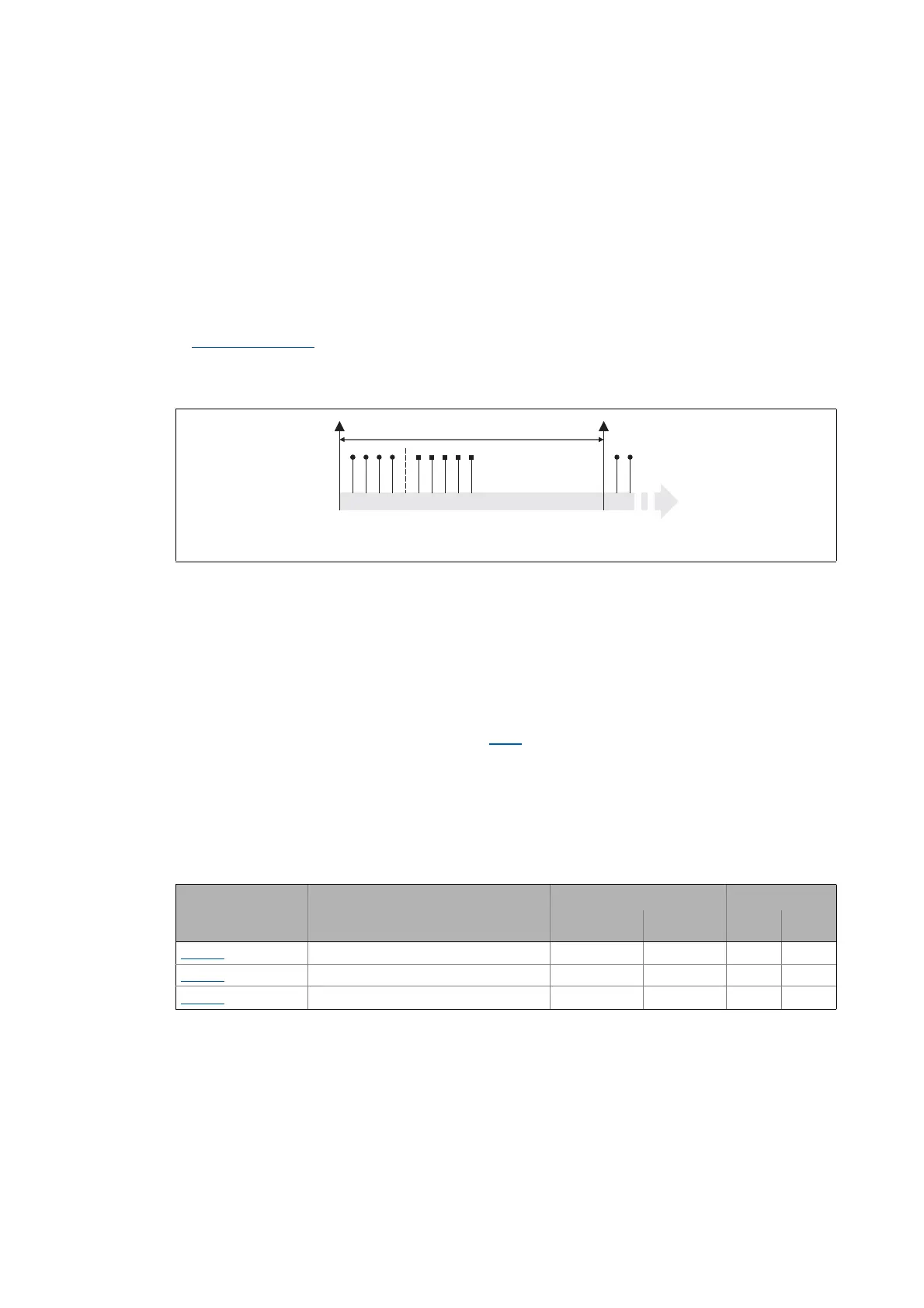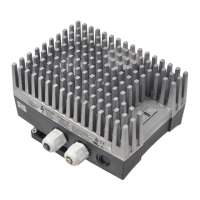Lenze · Decentralised frequency inverter 8400 motec (CANopen option) · EDS84DMOTCAN EN 4.0 - 02/2019 51
Process data transfer
PDO synchronisation via sync telegram
_ _ _ _ _ _ _ _ _ _ _ _ _ _ _ _ _ _ _ _ _ _ _ _ _ _ _ _ _ _ _ _ _ _ _ _ _ _ _ _ _ _ _ _ _ _ _ _ _ _ _ _ _ _ _ _ _ _ _ _ _ _ _ _
8.5 PDO synchronisation via sync telegram
In case of cyclic transmission, one or several PDOs are transmitted or received at fixed time intervals.
For synchronising the cyclic process data, an additional special telegram, the sync telegram, is used.
• The sync telegram is the trigger point for the transmission of process data from the slaves to the
master and for the acceptance of process data from the master in the slaves.
• For sync-controlled process data processing, the sync telegram must be generated accordingly.
• The response to a sync telegram is determined by the selected transmission type.
Transmission type
( 49)
General procedure
[8-3] Sync telegram
A. After the sync telegram has been received, the slaves transmit the synchronous process data to
the master (TPDOs). The master reads them as process input data.
B. When the transmission process is completed, the slaves receive (RPDOs) the process output
data (of the master).
• All other telegrams (e.g. parameters or event-controlled process data) are accepted acyclically
by the slaves after the transmission is completed.
• The acyclic data are not shown in figure [8-3]
They must be considered when the cycle time
is dimensioned.
C. The data are accepted in the slave with the next sync telegram if the Rx mode is set to 1 ... 240.
If the Rx mode is 254 or 255, the data are accepted in the next device cycle, irrespective of the
sync telegram.
Short overview: Parameters for the synchronisation via sync telegram
Sync cycle time
Parameters Info Lenze setting Assignment
Value Unit Sync
master
Sync
slave
C00367 CAN SYNC Rx identifier 128
C00368
CAN SYNC Tx identifier 128
C00369
CAN SYNC transmit cycle time 0 ms
